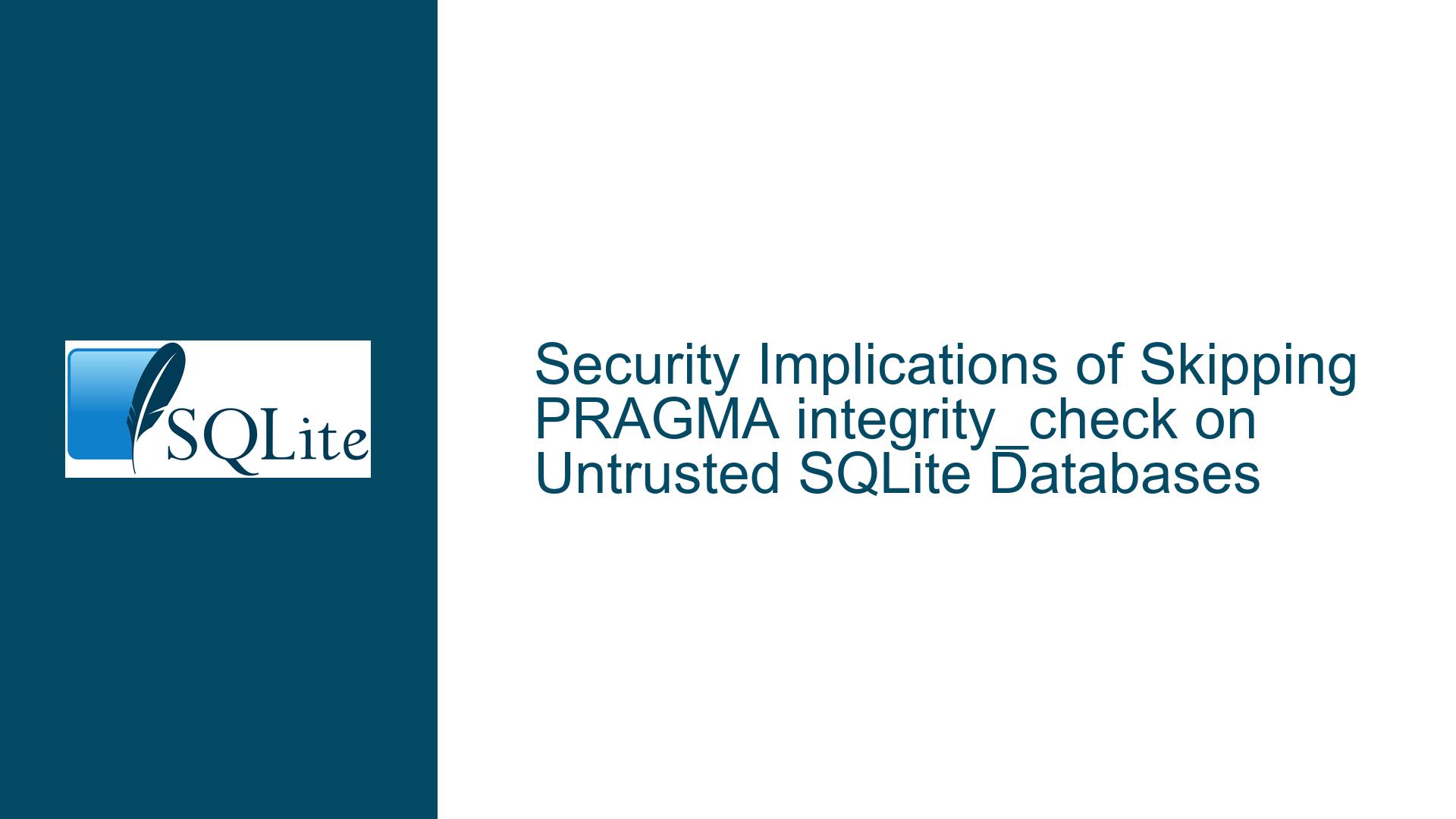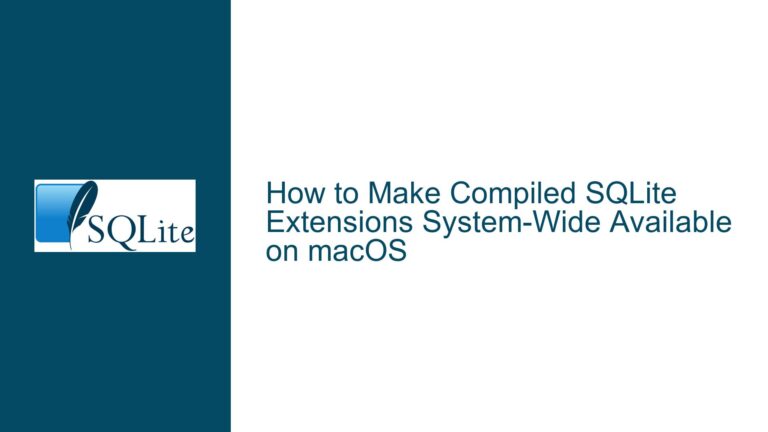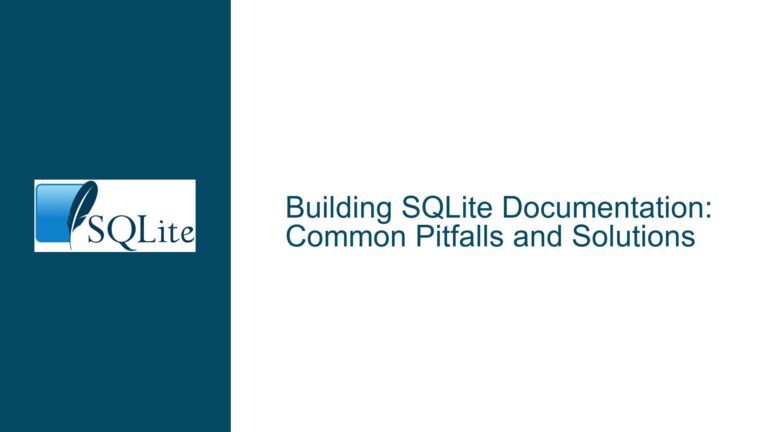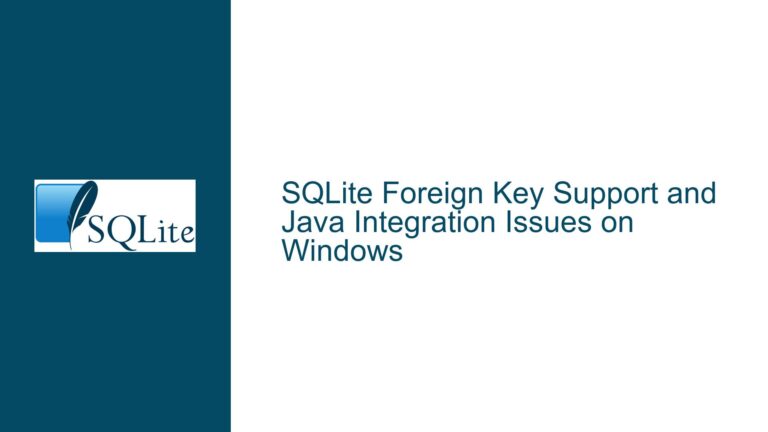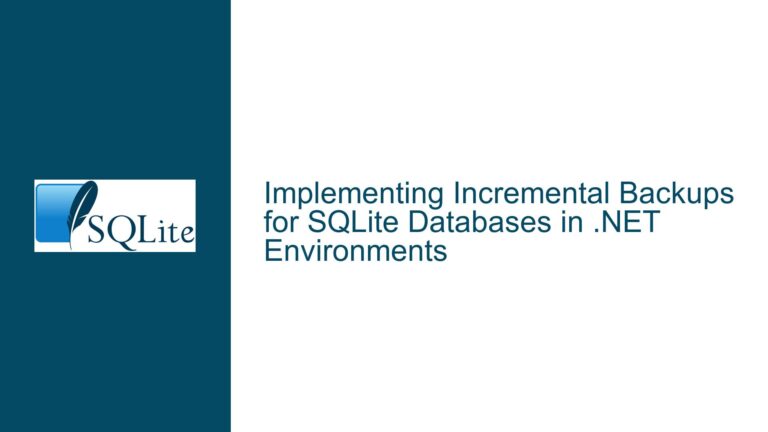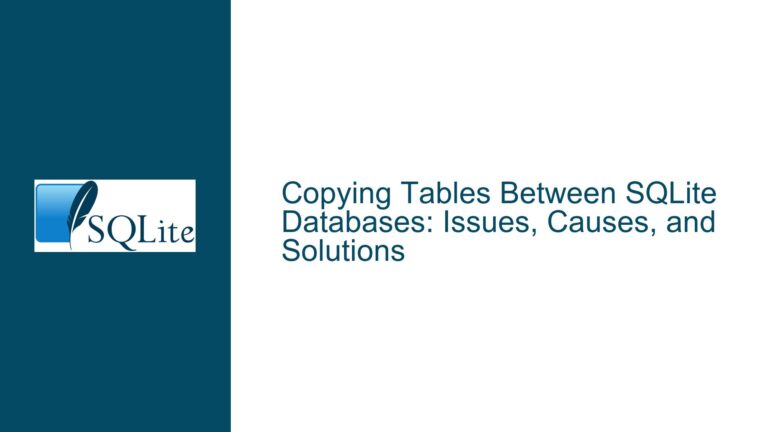Security Implications of Skipping PRAGMA integrity_check on Untrusted SQLite Databases
Understanding the Risks of Untrusted Databases and Integrity Verification
When working with SQLite databases from unknown or untrusted sources, the absence of proactive integrity checks introduces risks that extend beyond mere data corruption. The core concern revolves around the interplay between database corruption, SQLite’s internal parsing mechanisms, and potential exploitation paths. While SQLite is engineered to withstand malformed inputs, the possibility of undiscovered vulnerabilities in its parsing logic or memory management routines necessitates a layered defense strategy. The PRAGMA integrity_check and PRAGMA quick_check commands serve as critical tools to validate database structure and mitigate risks associated with malicious or corrupted files. This analysis explores the technical nuances of these risks, their root causes, and actionable steps to secure applications against such threats.
Why Malformed Databases or Rogue SQL Could Threaten Stability
The security posture of SQLite relies on its ability to sanitize inputs and handle malformed data gracefully. However, several factors create scenarios where bypassing integrity checks might expose vulnerabilities:
1. Undiscovered Edge Cases in SQLite’s Parsing Logic
SQLite’s resilience to crashes stems from extensive fuzzing and testing, but no software is entirely immune to edge cases. A malformed database file might exploit a latent bug in SQLite’s B-tree layer, journaling system, or virtual machine (used to execute SQL bytecode). For example, a corrupted index structure could cause out-of-bounds memory access if the parser assumes valid page linkages without verification.
2. Delayed Detection of Corruption
When a database is opened without preliminary checks, corruption might remain undetected until specific SQL operations trigger parsing of affected regions. A malicious actor could craft a database where corruption resides in seldom-used tables or indexes. When queried, this could destabilize the SQLite process during a critical operation, increasing the window for exploitation.
3. Performance-Optimized Assumptions
SQLite employs optimizations that prioritize speed over exhaustive validation. For instance, the quick_check skips cross-referencing indexes with table data, reducing runtime but allowing certain inconsistencies to persist. A database engineered to pass quick_check but fail integrity_check might contain discrepancies that, when queried, lead to undefined behavior in applications relying on accurate joins or constraints.
4. Memory Safety in the Face of Adversarial Inputs
SQLite is written in C, a language prone to memory-related vulnerabilities if input validation is incomplete. While the project’s testing infrastructure (e.g., dbsqlfuzz, OSFuzz) minimizes such risks, a perfectly crafted corrupt database could hypothetically trigger a buffer overflow or use-after-free error if validation steps like cell_size_check=ON are disabled.
5. Trust Boundaries in Application Design
Applications that accept user-uploaded databases or execute dynamic SQL from untrusted sources implicitly extend trust to those inputs. Without integrity checks, such applications expose their SQLite dependency to adversarial probing, where attackers iteratively refine malicious databases to exploit unpatched vulnerabilities.
Mitigating Risks: Validation Strategies and Secure Configuration
Step 1: Implement Tiered Integrity Verification
PRAGMA integrity_check: Run this command immediately after opening an untrusted database. It performs a full scan, verifying cross-page consistency, index correctness, and foreign key constraints (if enabled). This detects corruption that could destabilize subsequent queries.PRAGMA integrity_check;If the output is anything other than
ok, reject the database. Note that this is computationally expensive for large databases.PRAGMA quick_check: A faster alternative that skips cross-index validation. Use this when performance is critical, but recognize its limitations. It may miss index-to-table mismatches but will catch gross structural issues.PRAGMA quick_check;PRAGMA cell_size_check=ON: Enable this before accessing database content. It forces SQLite to verify that each cell’s size and format align with the declared schema, preventing malformed cells from entering the parsing pipeline.PRAGMA cell_size_check=ON;
Step 2: Sandbox Database Processing
Isolate database validation and initial processing in a restricted environment:
- Use a dedicated process with reduced privileges to open and validate untrusted databases.
- Employ OS-level containment (e.g., namespaces, seccomp filters) to limit the impact of potential crashes or memory errors.
- After validation, export the data to a new, trusted database file using
.dumpand.readcommands to eliminate hidden corruption:sqlite3 untrusted.db ".dump" | sqlite3 cleaned.db
Step 3: Monitor and Limit SQL Execution
- Avoid Dynamic SQL Generation: Do not construct SQL statements using string concatenation with data from untrusted databases. Use parameterized queries to prevent injection attacks.
- Enable Defense-in-Depth Features:
PRAGMA secure_delete=ON; -- Overwrite deleted data to prevent forensic leakage PRAGMA trusted_schema=OFF; -- Prevent malicious schemas from executing arbitrary code
Step 4: Benchmark Performance-Security Tradeoffs
- Measure the overhead of
integrity_checkversusquick_checkon representative datasets. For example, a 10 GB database might take minutes forintegrity_checkbut seconds forquick_check. - For interactive applications, prevalidate databases in background threads or during off-peak hours to avoid user-facing delays.
Step 5: Stay Informed About SQLite Updates
- Subscribe to SQLite’s security announcements and changelogs. For instance, the 2023 SQLite 3.43.0 release patched a WAL-mode corruption bug (CVE-2023-36191) that could cause data loss.
- Rebuild applications against the latest SQLite version to leverage ongoing fuzzing-derived fixes.
Step 6: Leverage External Tooling
- Use third-party tools like
sqlite3_analyzeror custom scripts to inspect database metadata before opening it in production environments. - Integrate static analysis tools (e.g., Clang’s AddressSanitizer, Valgrind) into testing pipelines to detect memory errors during database processing.
Step 7: Define a Corruption Response Policy
- Log all integrity check failures and quarantine offending databases for forensic analysis.
- Automate alerts for repeated failures, which might indicate targeted attacks.
Conclusion: Balancing Security and Performance in Untrusted Environments
The decision to enforce PRAGMA integrity_check or quick_check hinges on the application’s threat model and performance tolerance. For high-security scenarios—such as processing user-submitted databases in a web application—the performance penalty of full integrity checks is justified. In contrast, quick_check combined with cell_size_check=ON offers a middle ground for applications requiring both speed and basic validation. By adhering to tiered validation, sandboxing, and continuous monitoring, developers can mitigate the risks posed by adversarial databases while maintaining SQLite’s renowned efficiency.
